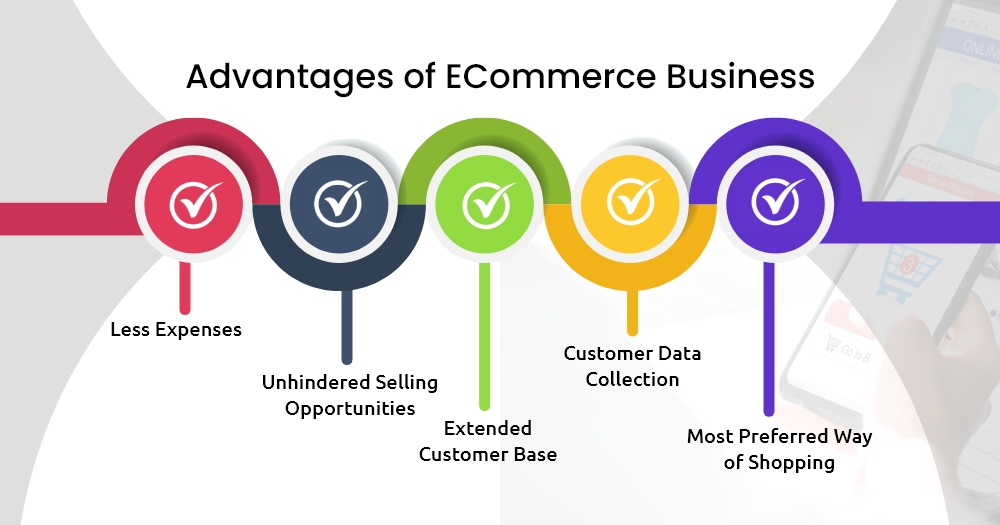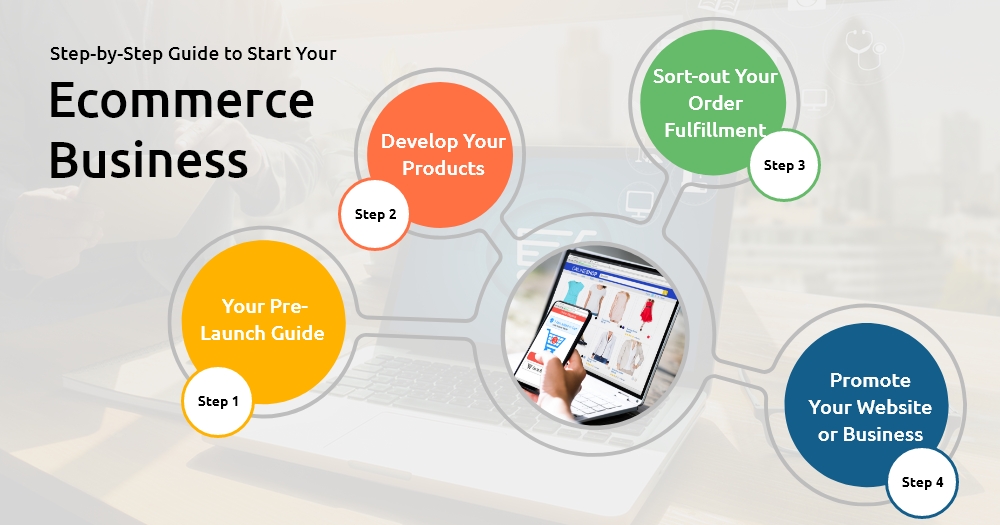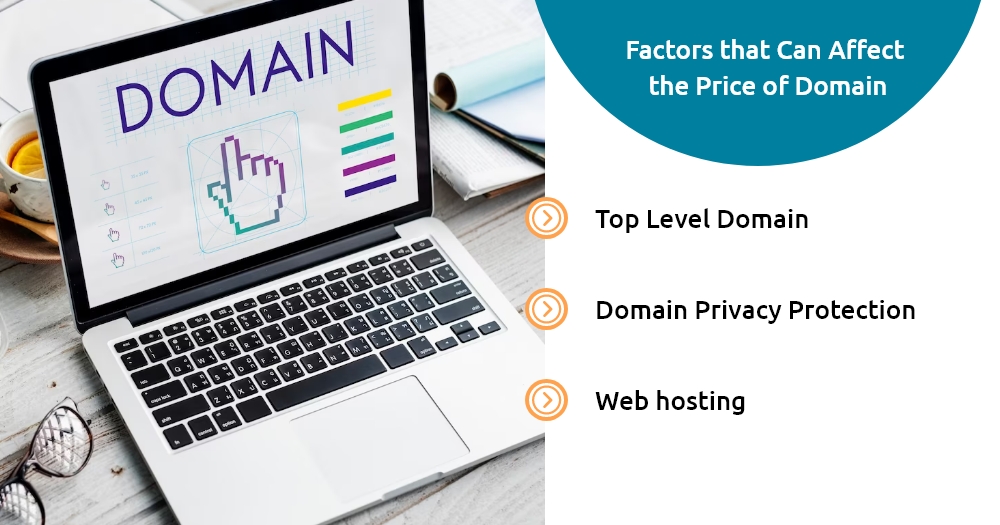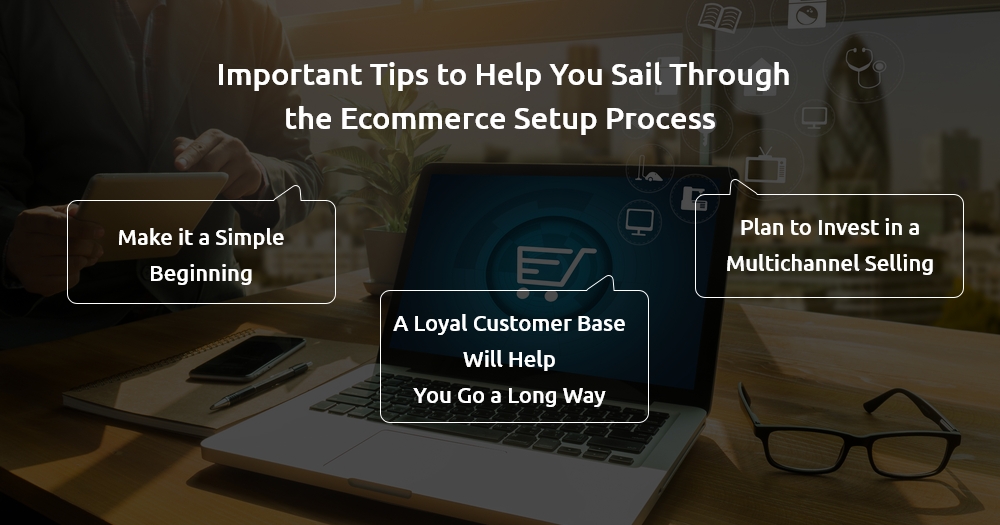There hasn’t been a good moment to begin an e-commerce venture. Every component of having to run a retail operation, inventory, and CRM—can be managed with simple cloud software. When you use a drop shipping business model, your initial investment is lowered to a great idea as well as just a few hundred dollars per month. The ease with which this is now possible is the consequence of 30 years of e-commerce progression. To understand better just how far e-commerce has also come, it’s a worthwhile endeavor to look at where it started.
One can define electronic commerce, or ecommerce, as it is popularly known, as the trading of goods and services over the internet. Ecommerce is the transformation of regular shops onto the internet using zero’s and ones. It includes transactions using online platforms, which primarily include websites and mobile applications. Not only this, but it encourages online transactions, which helps in the advancement of people and technology. Here are the best e-commerce business ideas for beginners.
While people think ecommerce is only for selling products and services to customers, it actually gives a lot of opportunities to those dealing in B2B (business-to-business) transactions. If you want to start your own store, hire best e-commerce development company.
Advantages of ECommerce Business
To market their goods, many smaller consumer enterprises rely only on online sales. Operating only online is more economical, and cutting-edge digital advertising technology enables companies to more precisely target potential clients. Entrepreneurs can decide if running an e-commerce firm is the appropriate choice for them by being aware of its benefits.
Here are the most common advantages of ecommerce business:
1. Less Expenses
Several small e-commerce enterprises may be run by a single owner, you probably won’t need to hire staff members until you’ve generated enough money and sales to warrant doing so. Also, you won’t have to pay the overhead associated with running a physical store. You won’t have to lose your pocket for the countless expenses that are associated with running a real store, such as real estate.
2. Unhindered Selling Opportunities
Because you don’t have to be there every moment somebody decides to buy something, e-commerce enterprises can operate as long as the internet is up and running.
3. Extended Customer Base
Everybody who has internet connectivity and can receive deliveries from your company is a prospective client.
4. Customer Data Collection
Data on customers will be available to you. You must be able to keep tabs on client purchasing patterns and send out automated and personalized emails urging additional purchases. Sales can be increased by carefully choosing which clients to target with marketing communications.
5. Most Preferred Way of Shopping
E-commerce is considered the most preferred way of shopping by as many as 55.6% of customers.
Is E-commerce Right for Your Brand and Business?
E-commerce gave many entrepreneurs a way to achieve great success.
Although the initial costs of beginning and running an e-commerce firm are often lower than those associated with a brick-and-mortar business, they are still substantial. This is true of all commercial endeavors. Either you’ll need the financial means to leave your day job and devote all of your time to your e-commerce firm, or you’ll need to grow it while maintaining a day job. In either case, you’ll require grit and dedication as well as emotional and financial support.
It might make sense to build your own website and sell directly to customers if you’ve had experience selling things on a consumer-to-consumer marketplace in order to avoid the cut that a third-party platform takes. While running your own ecommerce website, you can still sell goods on other platforms.
Consider the advantages and disadvantages before deciding whether or not to start an ecommerce business, and evaluate your company’s competitive advantage honestly. You might be interested to know the best online business ideas for beginners.
How to Start an Ecommerce Business? Step-by-Step Guide
There are still several considerations and decisions to be made throughout the preparation and execution phases, even though establishing up and dealing with all the necessary equipment has become much simpler. Also, there is no one way to succeed in e-commerce. It’s probable that not every component of this book will relate to what you’re doing, but it will cover the essentials and more. Consider this manual more of a reference tool than a how-to manual.
Having said that, we’ve nonetheless ordered each segment in a manner that approximates sequence.
Step 1: Your Pre-Launch Guide
There is no denying that building an e-commerce website carries significantly less risk than opening a physical store. You save hundreds of dollars per month since you don’t have to pay rent on a space. You also spend less money upfront, finish and furnish a space, turn on the utilities, and move in. If you have an entirely digital storefront, you won’t need as many staff, if any at all. You might not even need to buy, store, or handle inventory in advance, according to your company’s strategy.
But, there remains a heck of preparation and crucial choices to be made. While users won’t have to drag oneself around town seeking out various storefronts, users are still going to do a little grunt work to ensure that you set up your store in the right location. This includes registering a memorable domain name, locating a service to host your domain’s website and email, and determining which software will strengthen your online marketplace.
There are numerous decisions to be made, all of which are intertwined. Let’s look closer at these three crucial elements of your company. While this is not the same as searching for just a geographical place, it may help those who are not technically savvy to think about it that way.
Need a Custom eCommerce Solution? Let’s Build It Together –
Choose and Register a Suitable Name for Your Domain
Often, what has become unoriginal began as a simple truth. It has never been incorrect to assert that the sole three items that are important in real estate are place, location, and location. Everything else may be corrected or updated, but the location of a property cannot be changed. Main streets with plenty of parking but plenty of pedestrian traffic are ideal for retail stores. People on foot could enter on the whim even though they did pass by it and thought the shop sounded fun.
It’s the same thing with your web address. People will not stop there on the spur of the moment like a road user, but they will “walk” in the reverse way (i.e. not find you) if one’s domain is hard to recall or search for. To accomplish this, prioritize short and catchy web addresses over descriptive ones. Remember, there’s nothing about the name “amazon.com” that suggests its intent, but we all recollect where it is. Here are some unique domain name ideas to start an ecommerce business.
After you’ve decided on a good web address, you must register it. There are numerous services available to help you with this. Here are list of some great free e-commerce website builders to create your store.
Factors that Can Affect the Price of Domain
- Top Level Domain — the letters that follow the final dot in a web link are referred to as the domain name at the top. If the web were just a city, the Top – level domain would be your main thoroughfare. Nowadays, there are numerous streets to choose from, each with its own set of advantages and disadvantages. A.com address is equivalent to opening a store on Main Street. This is the scenario that people imagine when they think of the internet.
- Domain Privacy Protection — You can use a tool called “WHOIS” to search any domain name to see if it’s already registered, and it will return a slew of technical aspects about the domain—as well as your username and contact information. Unless you’ve got privacy enabled. It’s an additional fee, but it’s well worth it.
- Web hosting — having to register one’s domain is akin to purchasing an empty lot. You have your papers in order and an address, yet you have to build your store—in this case, a website. You can construct on the land home improvement if you want by buying servers and network infrastructure to host your website. This is an extra cost as there are numerous companies that have their own servers and therefore can multitude the site on your behalf for a lower price. Some domain registrars also provide hosting services. Some hosting companies, on the other hand, provide domain name registration services.
A Few Things to Keep in Mind While Finding a Name
- Check to see if there are any expenses involved with domain transactions.
- Other hidden or unexpected fees should be avoided.
- A few registrars will pre-select a number of inserts for you, and it is your responsibility to start noticing and uncheck them.
Make certain that there aren’t any expenses involved with domain transfers. Once you sign up a web address with a specific registrar, they keep it associated with the significance of your site’s title and IP address.
For whatever reason, you might have to transmit your web address to a different provider at some point. Trying to transfer a domain is as simple as updating documents and costs no money. It shouldn’t cost the user anything, either.
Customers are frequently enticed by the age-old strategy of low upfront costs. Perhaps you pay a little money to sign up for a domain that is yours for a year, but it necessitates an auto-renewal at a premium cost. This is common among smaller, lesser-known registrars attempting to grow their clientele.
In certain cases, they’ll add the same web address with a wide range of TLDs to your cart with the idea that you ought to lock it into place right away. But why would you need a.net, .io, .biz, and, .www domain all in the same place? Most likely not. When you’re checking out, make sure they haven’t “helpfully” added both these facilities to your order.
Speed Up Sales with Best eCommerce Solutions
Step 2: Develop Your Products
We covered all there is to think regarding and complete in the 1st chapter of this guide in order to get one little chunk of the web prepared to host one’s online marketplace. Now we’ll talk about the store on its own: your website. Or, to be more precise, the software that manages the shopping experience.
E-commerce software, at its most basic, is the shopping trolley itself. When a customer selects an item, it is added to the cart, so they can configure their payment and shipping information. However, today’s ecommerce platform provides much more, and determining exactly what one’s needs are can be difficult.
Because this Buyers’ Guide is tucked away inside a larger handbook on beginning an ecommerce business, the knowledge here is predicated on a few assumptions: you’re just getting started, you’re not extremely technical, and you’re unlikely to hire a qualified individual. And, even by way, that’s fine. Looking to hire a person whose entire purpose is IT is an unnecessary expense inside an age because once cloud technology (also known as Software as a Service, or SaaS) could be obtained and operated via a computer’s web browser.
Step 3: Sort-out Your Order Fulfillment
The procedure for getting clients’ purchases into their hands is known as product delivery.
The majority of e-commerce website owners provide shipment label publishing as the initial step in the delivery process. Some also allow customers to add shipping charges to their orders just at checkout. If simple shipping seems to be important to you, prioritize it when selecting an e-commerce website.
If you decide to manage order completion yourself, look into shipping rates to get an idea of how much it will cost. Remember that your e-commerce clients could be anywhere in the world. State clearly on your webpage if you are unwilling to ship to certain locations.
Step 4: Promote Your Website or Business
You’re prepared to begin serving the public now that your goods or services are listed on one’s web retailer and your webpage is up and running, as long as they are able to locate your products.
Your marketing strategy could involve the following elements:
- Omni channel commerce refers to the practice of listing your goods on third-party marketplaces such as Amazon and Instagram. A few e-commerce web designers can assist with this.
- Influencer marketing is the practice of paying well-known social media creatives to promote your products.
- Paid advertisements on social media or social media content.
- Search engine optimization for your company’s website.
- Trying to send marketing emails to current and prospective customers.
Important Tips to Help You Sail Through the Ecommerce Setup Process
Though we have shared with you a complete guide that can help you set up your ecommerce business easily and seamlessly, it can get a bit overwhelming though. To save yourself from overwhelming situations, here we are sharing with you some of the best experts’ suggested tips.
1. Make it a Simple Beginning
If you’re not sure e-commerce is indeed the best track for you, start with a minimal online marketplace. This could imply using a free e-commerce page builder, placing an order of a small amount of stock, or trying to sell just one or a few types of products.
Starting small can reduce the amount of startup funding required and provide a simpler way to change direction when your initial idea fails. As your business grows, you can upgrade to a more rigorous e-commerce console and broaden your product line.
2. A Loyal Customer Base Will Help You Go a Long Way
While starting your ecommerce business, you need to have customers who appreciate your products and buy them more than once. Also, customers will promote them among their networks.
Establishing a strong brand presence on social media can help you build a following. But always remember, the more information you can get from your users or customers, the more you can get opportunities to market directly to them, whether that means it comes from creating an email marketing campaign or sending discount codes via text message. Apart from it, it also includes letting them know how your booth will be at an event.
3. Plan to Invest in a Multichannel Selling
Existing consumers could be ready to come back to your website on a regular basis. To achieve new ones, however, you may need to meet people wherever they happen to be, which could be on Amazon, Instagram, TikTok, or elsewhere. Begin with both the social media channels where your clients are probably going to be, then launch the connectivity and monitor their performance. Platforms can be added later if they fit your business strategy.
Keep in mind that trying to sell in person is also a channel. Craft fairs, local shops, and manufacturing or trade events can help you meet new customers while also making money.
How Much does it Cost to Start an eCommerce Business?
Starting an ecommerce business has a range of cost associated with it, depending on what type of products or services you plan to offer, the technology you need to set up your business and the marketing strategies you decide to pursue.
The largest cost is typically upfront design and development costs for building an e-commerce website. This can range from basic website templates costing in the hundreds of dollars for smaller shops selling fewer than 10 products to custom websites with much larger catalogs costing in the tens-of-thousands range.
You should also factor in other setup costs like domain registration fees, hosting charges, search engine optimization (SEO) costs and setting up payment processing systems such as PayPal or Stripe as well as any additional security measures that may be necessary. These startup expenses can add up quickly so it’s best to research all options beforehand before making decisions regarding what system will work best for your business model.
Marketing efforts are another vital aspect when launching an ecommerce venture. Popular methods include running advertisements on social media platforms (Facebook Ads), using Google AdWords campaigns, influencer outreach programs, email marketing campaigns and content creation like blog posts or video tutorials featuring your product/service offerings.
Depending on which mediums you choose to focus on these efforts could require spending more money upfront since some companies may charge more per click/view while others only take a percentage of sales made through their services.
It is important that you create a budget ahead of time and make sure there is enough money available in order for those activities to take place effectively throughout the life cycle of your store launch – from branding awareness during prelaunch stages through post-sale customer service follow ups after purchase completion online by customers Ultimately though investing in effective marketing is important if reaching success with our online presence goals – so be sure not forget this piece when crafting out a timeline & budget plan!
Can you Start an Ecommerce Business with no Money?
Starting an ecommerce business with no money is certainly possible, though it requires a great deal of dedication and determination. You’ll need to rely on creativity, resourcefulness, and hard work to bring your venture to life.
First and foremost, you’ll need a good idea for the product or service that you plan to offer. Taking time to conduct market research will help you determine if there is in fact demand for what you are offering. Without any capital available for advertising or marketing purposes and no access to third-party payment processors like PayPal, it’s important that your product or service can generate interest without any external assistance.
If the demand is there then the next step is setting up an ecommerce platform without spending a dime—this may include finding ways to create your own website using existing templates and tools such as Wix or Squarespace.
Once all of this groundwork has been laid out it’s time to get creative when it comes sourcing goods; in some cases looking around local businesses/manufacturers as well as thrift stores/second hand shops might be able to provide materials at much lower costs than traditional suppliers would ask for— search locally for bargain prices on goods!
When interacting with suppliers make sure that payments can be made through barter systems – swapping the products which have already been sold instead of asking outright cash payments from them just yet until revenue stream becomes more secure & consistent – Only once sales have taken off should you investigate options available from credit card companies so customers have multiple methods of payment available at checkout.
And finally staying organised & keeping track of up-to-date records like orders placed & inventory being delivered by maintaining accurate accounting books should be another priority while starting up a business without cash funds – leveraging business intelligence software such as those offered by Microsoft Dynamics 365 could be helpful here but even tracking information manually can work (at least at first). It’s best practice!
Starting an ecommerce business with no money isn’t easy by any means – but its definitely achievable given enough commitment and planning– although success won’t happen overnight; persistence pays off over time!
Is E-commerce Business Profitable?
Yes, ecommerce business can be very profitable when it is done correctly. There are numerous advantages that come along with an online store, such as access to a global customer base and lower overhead costs in comparison to regular brick-and-mortar stores. When planning for profitability, there are several things you should consider:
- First, you need to assess the market landscape and identify what type of eCommerce business would suit your needs best. Consider all factors like existing competition in the market, pricing strategies of rivals, product selection and availability, etc.
- Second, having a well thought out marketing strategy is essential for success in e-commerce businesses since you will be relying heavily on digital methods to drive customers to your site. A thorough understanding of who your target audience is and how they search for information online is key here. Utilizing tactics such as SEO optimization (including keyword research), social media presence (Facebook Ads & Instagram Influencers) & email campaigns can not only increase website traffic but also help create brand awareness & recognition amongst potential customers.
- Thirdly ,once the sales process starts coming through its important to have a reliable payment processor integrated into the website so that customers don’t have any difficulty making payments or getting refunds etc if needed. Some popular payment gateways include PayPal , Stripe and Braintree. Another important thing would be quality customer service – responding quickly & efficiently as much possible& helping them resolve any queries or issues they may have about their orders. This helps build trust between customers& your business leading more people shop from your site!
- Last but not least ,a successful ecommerce operation requires a certain level of financial knowledge enabling one make smart decisions on matters like taxes , budgeting inventory & other resources accordingly which if done right can translate lots of profits form this venture!
Conclusion
To start a company stand in 2025, the important steps include selecting a niche, researching the market, creating a strategic plan, selecting an e-commerce platform, constructing a consumer-friendly website, trying to establish reliable shipping and payment options, trying to launch an advertising campaign, and able to monitor and maximizing the business.
Apart from it, ecommerce business owners may face issues such as greater competition, shifts in customer behavior, and distribution network interruptions, yet there are also possibilities for development because of the projected ongoing expansion of the online retail market and technological advancements. To prosper in the e-commerce industry, companies ought to concentrate on their niche, provide outstanding client service, stay current with new tech, be able to adapt, put the money in advertising, and organize and monetarily vigilant.
FAQs
1. What are the basic steps to start an eCommerce business?
To start an eCommerce business, you need to choose a niche, conduct market research, select a business model, register your business, build an online store, and market your products.
2. How much does it cost to start an eCommerce business?
The cost can range from $500 to $10,000 or more depending on your platform, inventory, marketing budget, and whether you’re using custom development or templates.
3. Do I need a license to run an eCommerce business?
Yes, you typically need a business license, tax ID, and may need permits depending on your location and the products you sell.
4. Which is the best platform to launch an eCommerce store?
Popular platforms include Shopify, WooCommerce, Magento, and BigCommerce. The best choice depends on your budget, technical skills, and business goals.
5. How do I attract customers to my new eCommerce site?
Use a mix of SEO, social media marketing, email campaigns, paid ads, and influencer partnerships to drive traffic and build trust with your target audience.
Great Together!
![How to Start an Ecommerce Business in 2025? [Complete Guide]](https://theninehertz.com/wp-content/uploads/2023/03/How-to-Start-an-Ecommerce-Business-in-2023.jpg)





![How to Make an iPhone Game? [2026 Guide]](https://theninehertz.com/wp-content/uploads/2022/12/How-to-Make-an-iPhone-Game.png)







